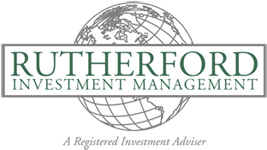Published July 11, 2025

Never mind that we started the year with tariff tantrums and trade wars; the second quarter of 2025 was a master class for investors in why to look beyond the headlines. Liberation Day hit early in the quarter, sending markets into a tailspin. The S&P 500 plunged 15 percent from its high point. Panic selling reached fever pitch. Billions fled to money markets. The financial press declared the bull market dead. Yet by quarter’s end, stocks posted the best quarterly close since 2023, with the S&P up over 10 percent. From those April lows to June’s close, the index surged 24 percent, all within a single quarter.
Here is what the headline writers missed during this chaotic time: Corporate earnings kept growing, particularly in technology. Announced tariffs were postponed or reduced. The recession everyone predicted for Q2 did not arrive. And slowly, methodically, all that sidelined cash started creeping back into equities. As Warren Buffett likes to say, “Be fearful when others are greedy, and greedy when others are fearful.” Nothing attracts money like a rising market.
In June, 147,000 jobs were added, right in line with recent averages but below the 250,000 needed to absorb new workers. The unemployment rate ticked up slightly to 4.1 percent, though it has been remarkably stable in the 4.0-4.2 percent range for over a year. Noteworthy was the increase in long-term unemployment, which was up 190,000 to 1.6 million. That’s a yellow flag worth watching.
Stable employment and inflation numbers allowed the Federal Reserve to continue its delicate dance. At the June 18 meeting, board members held rates steady at 4.25-4.50 percent, with Chairman Powell maintaining his “data dependent” mantra. However, the Fed’s own projections show the group expects inflation to rise to 3 percent this year — higher than its 2 percent target. Meanwhile, unemployment could climb to 4.5 percent. That’s what economists call signs of stagflation, and it’s about as welcome as a skunk at a garden party.
Geopolitical tensions flared on June 13 when Israeli air strikes against Iran sent oil prices surging nearly 10 percent and the Dow tumbling more than 700 points. Iran’s threat to close the Strait of Hormuz (through which 20 percent of the world’s oil flows) reminded investors why diversification matters. Yet the market shrugged off this risk within days, proving once again that geopolitical tremors, while unsettling, rarely derail long-term trends. When the U.S. joined in with air strikes on Iranian nuclear facilities on June 21, the stock and oil markets stabilized further, seeming to have already priced in this likely action. Subsequently, stocks have continued their upward trajectory, with investors more focused on the continued frenzied activity in AI-related investments than on tariffs, geopolitical problems or interest rates.
In early July, Congress passed sweeping fiscal legislation combining tax cuts, defense spending increases, and expanded social programs. The Congressional Budget Office estimates it will increase deficits by $3 trillion to $4 trillion over 10 years. The bond market yawned … for now. But remember, as Senator Everett Dirksen once said, “A billion here, a billion there, and pretty soon you’re talking real money.”
What’s an investor to do? The same thing as always counseled in this column: stay invested, stay diversified, and stay patient. Markets have historically trended upward over time, despite wars, pandemics, political upheaval, and pundits predicting doom. This quarter’s dramatic recovery from April’s lows reinforces the timeless wisdom: those who stay invested get rewarded. This quarter proved the point beautifully.
Headwinds remain: rising unemployment, stubborn inflation, geopolitical tensions and a Federal Reserve trying to thread the needle. But when hasn’t the market faced challenges? As we head into the traditionally weak summer months, remember that seasonal patterns are about as reliable as an umbrella-free Rose Festival. This June proved that emphatically.
The second quarter of 2025 was the entire market cycle compressed into three months: panic, despair, recovery, and new highs. It’s the perfect reminder that the worst thing you can do is let fear drive your investment decisions.
Stay invested. Stay diversified. And as a long-term investor, do not check your portfolio every day. It’s summer, after all.
William Rutherford is the founder and portfolio manager of Portland-based Rutherford Investment Management. Contact him at 888-755-6546 or wrutherford@rutherfordinvestment.com. Information herein is from sources believed to be reliable, but accuracy and completeness cannot be guaranteed. Investment involves risk and may result in losses.
